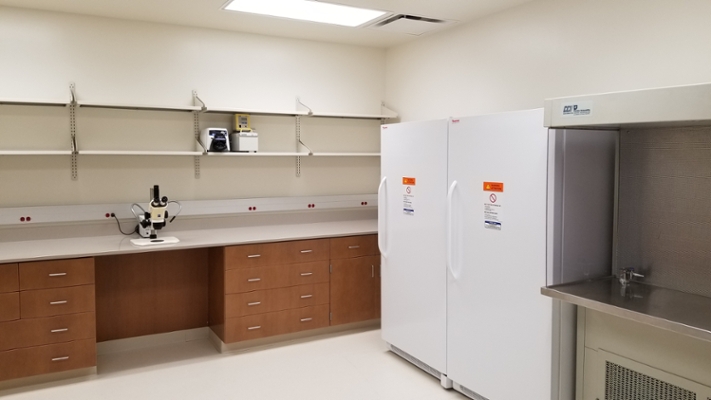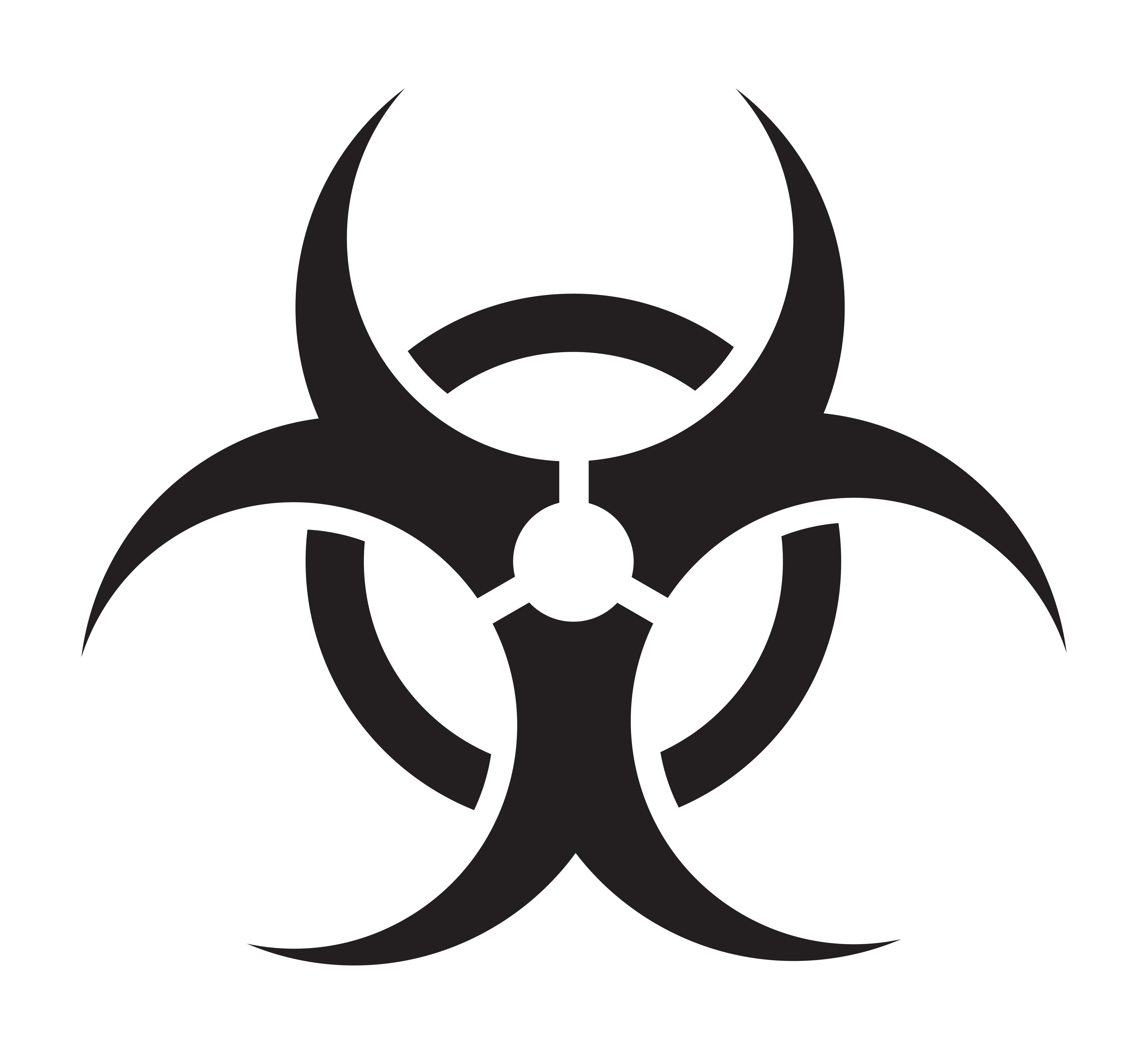Integrated Microscopy and Imaging Laboratory
Welcome to the Integrated Microscopy and Imaging Laboratory!
The mission of the Integrated Microscopy and Imaging Laboratory (IMIL) is to support research progress and grant development by encouraging researchers to explore advanced imaging modalities and to incorporate them into their existing research programs.
The IMIL provides technical expertise and cutting-edge microscope systems to support the research of faculty and staff of Texas A&M University Health Science Center, Texas A&M University, and all other campuses. The IMIL includes six microscopy rooms, supporting facilities, and an image processing station.
Technical staff is available to train and assist with design, implementation, and analysis of experiments as well as assist in troubleshooting.
|
IMIL iLabs Online
|
| Acknowledgement & Publications | |
| Contact | |
| Education/Training | Location/Parking |
|
|
|
Education and Training
The Integrated Microscopy and Imaging Laboratory (IMIL) is dedicated to supporting scientific discovery by providing comprehensive training and resources for researchers. Our expertise spans experimental design, sample preparation, technology utilization, and image analysis, ensuring researchers can effectively use microscopy to address fundamental biological questions.
Our Offerings:
- Personalized Training: One-on-one and group sessions on specific microscopy techniques and instruments.
- Cutting-edge Insights: Demo workshops and seminars showcasing the latest imaging technologies.
- Knowledge Sharing: Imaging spotlights exploring theoretical and practical aspects of microscopy.
- Academic Development: Graduate-level microscopy courses and free confocal microscopy training for new students and postdocs.
Training and Consultation:
To ensure the best training experience, we recommend scheduling training when you are ready to start imaging your samples. This approach helps retain skills and knowledge without the need for repeated sessions. If you are new to microscopy, schedule a meeting with an IMIL scientist to discuss your project and goals before preparing samples. Submit a consultation request by clicking the "initiate request" button for Consultation Request in the Request Services tab of our iLabs site https://tamu.corefacilities.org/service_center/show/6207?tab=services
Ready to Begin Imaging?
Submit a training request on our iLabs site: https://tamu.corefacilities.org/service_center/show/6207?tab=services
Before requesting training, ensure you have:
- An iLab account with funds assigned by your Principal Investigator (PI).
- A laser safety training certificate (PDF copy) from the free 30-minute online course offered by Texas A&M Environmental Health and Safety, Radiological Safety (https://ehsdtraining.tamu.edu).
Fill out the training request form, attach your laser safety certificate, and an IMIL scientist will contact you to schedule the training based on instrument availability and your schedule.
Additional Requirements:
If you need badge access to the MREB2 building, provide a copy of your TrainTraq transcript to submit an academic collaborator badge request. The College of Medicine requires yearly training updates, including:
11012: FERPA (Family Educational Rights and Privacy Act)
2111212: Export Controls
2114755: HIPAA (Health Information Portability and Accessibility Act)
2114106: Orientation to Lab Safety
11020: Hazard Communication
Note on Training Fees:
While training used to be free, we now charge for microscope time. However, we continue to offer high-quality educational services. Our spotlight presentations now include practical instruction and in-person demonstrations, providing a valuable foundation for future microscope usage.
For more information or to schedule a consultation, visit our iLabs site.
Reservations & Rates
Rates
IMIL iLAB Reservation Calendar |
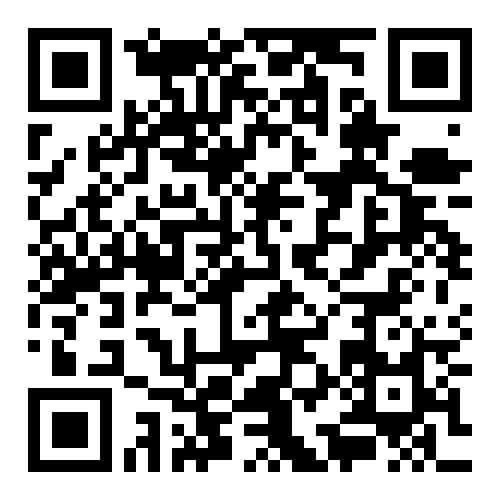 IMIL iLab QR Code |
| Core Equipment | Rate/Hour |
|---|---|
| Olympus Flouview: 3000 Confocal Microscope | $30/Hour |
| Olympus VS-120 Slide Scanner | $20/Hour |
| Olympus FVMPE-RS Multiphoton Microscope | $55/Hour $275/24 Hours |
| Leica AOBS SP2 Confocal Microscope | $20/Hour |
| NanoFluor II Integrated Microscope System | $20/Hour |
|
Technical Support (Training) |
Free to users |
|
Image Analysis Computer |
Free to users |
|
Histology Laboratory |
Free to users |
|
Cell Culture Laboratory |
Free to users |
|
Tissue Prep Laboratory |
Free to users |
Parking Directions
-
-
- Scratch permits can be purchased here: https://health.tamu.edu/parking/department-purchase.html
- The HSC campus is on the #47 bus route: https://aggiespirit.ts.tamu.edu/RouteMap
- Google maps: We are in MREB 2 next to MREB 1
-
Biohazard Safety
Safety Levels at the IMIL Facility:
- Most labs are Biosafety Level 1 (BSL-1)
- Bringing high-risk materials is not allowed: BSL-3, BSL-4 agents, and radioactive materials are strictly always prohibited in the facility.
- Some labs can be converted to BSL-2: These rooms require special permission to work with BSL-2 materials.
How to request BSL-2 conversion:
- Request permission first: If you want to use a BSL-2 room (including bringing animals), go to the request services tab in iLabs: https://tamu.corefacilities.org/service_center/6207/?tab=services . Scroll down to Biosafety Level Conversion. Read the instructions and click the "request service" button
- Get approval for your research: Before bringing any BSL-1 or BSL-2 material (including animals) to the facility, you need two things:
- Approval on your Texas A&M Institutional Biosafety Committee (IBC) permit for using the specific microscope and support rooms you need.
- Provide Dr. Murphy with information about the specific risks involved in your research.
- Get special approval each time you use BSL-2: EVERY TIME you plan to do BSL-2 experiments, you must fill out the IMIL Biosafety Conversion Service Request and get written approval from Dr. Murphy. Approval from Dr. Murphy will not be granted until the Office of Biosafety (OB), has received all documentation and approved the conversion.
- Follow safety procedures once approved:
- Dr. Murphy will post the appropriate entry signs.
- Appropriate procedures will be implemented and enforced.
- You will be assigned a BSL-2 conversion kit.
Additional Safety Rules:
- Animal surgery: If your BSL-2 research involves surgery on animals, it must be done in a biosafety cabinet. Animals must also be transported in secondary containment.
- Report spills immediately: Any spills of BSL-2 materials, large spills (more than 25 ml) of BSL-1 materials, or spills of genetically modified BSL-1 materials must be reported immediately.
- Contact Dr. Malea Murphy and the Office of Biosafety at 979-862-4549 or biosafety@tamu.edu.
- If it's after hours, call the Communications Center at 979-845-4311 for help.
In the event of a spill, spill kits can be found in each laboratory. Assess personnel involved first. If any biohazardous material gets in your eyes, flush your eyes at the nearest eyewash immediately. Remove any contaminated clothing or personal protective equipment (PPE) and wash any exposed areas of skin with soap and water. Put on clean clothing (if necessary) and fresh PPE (i.e., lab coat, gloves, and eye protection) before cleaning the spill. NOTIFY DR. MURPHY IMMEDIATELY. Cover the spill with paper towels. Consider that the spill may extend farther than you think and may have contaminated other surfaces nearby. Apply agent-appropriate disinfectant on the spill area, working from just outside the margins of the spill towards the center. Use only 70% ethanol on the microscope and optical table. If possible, Dr. Murphy will decontaminate the microscope and any other sensitive equipment. Allow for sufficient disinfectant contact time. Note: minimum contact time may vary, depending on the disinfectant(s) in use and the agent(s) being treated. Pick up any broken glass using forceps, tongs, or a broom and dustpan. NEVER pick up glass with your bare hands. Ensure glass is decontaminated before disposing in broken glass or sharps container. Dispose of bleach-soaked paper towels (or other absorbent materials) as non- biohazardous waste. Other solid biohazardous wastes must be collected into a biohazard waste bag and autoclaved. Bleach containing solutions or materials should NOT be autoclaved. Repeat disinfection of the spill site to ensure the area is thoroughly cleaned and disinfected. Immediately report any spill of risk group 2 materials outside the biosafety cabinet, any spill of risk group 1 material in excess of 25 ml, and any spill of recombinantly modified risk-group 1 material to Dr. Malea Murphy and to the Office of Biosafety by calling 979-862-4549 or e-mailing biosafety@tamu.edu. For after- hours spill emergencies, please call the Communications Center at 979-845-4311 for assistance.
Acknowledgment and Publications
USERS WILL ACKNOWLEDGE THE IMIL BY NAME IN ANY PUBLICATION CONTAINING IMAGES ACQUIRED BY ANY OF THE FACILITY MICROSCOPES.Research using the IMIL will be categorized in the following ways with corresponding recommended level of recognition:
REQUIRED for independent use of the facility by trained users– “The authors acknowledge the assistance of the Integrated Microscopy and Imaging Laboratory at the Texas A&M College of Medicine. RRID:SCR_021637”-
Provision of routine procedures and methods by the facility director and/or facility manager - Acknowledgment of facility and individual(s)
Use of original techniques, novel experimental design, and/or significant involvement in the interpretation of scientific data by the facility director and/or facility manager or involvement in the actual writing of a paper by the facility director and/or facility manager - Co-authorship and acknowledgment of facility
Independent, original work by the facility director and/or facility manager senior authorship with permission granted from the investigator for use of materials and acknowledgment of facility.
Resources for Guidance on publishing imaging data:
- Community-developed checklists for publishing images and image analyses | Nature Methods
- Best practices and tools for reporting reproducible fluorescence microscopy methods | Nature Methods
Additional Resources
Image processing
- https://fiji.sc/
- https://qupath.readthedocs.io/en/0.4/index.html#
- https://imaris.oxinst.com/imaris-viewer
- https://imaris.oxinst.com/big-data
- https://www.olympus
- https://micro.magnet.fsu.edu/primer/index.html
Texas A&M Cores
Contact
 |
Andreea Trache, PhD Facility Director trache@tamu.edu |
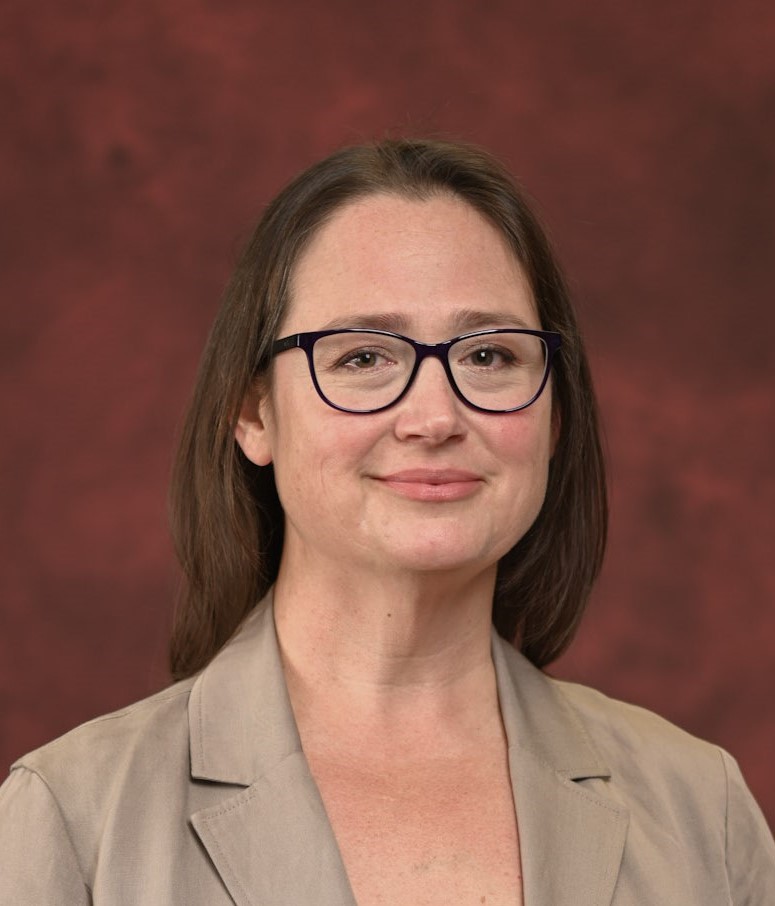 |
Malea Murphy, PhD Facility Manager maleamurphy@tamu.edu |
Histology Laboratory
Only current users preparing samples for imaging experiments on IMIL microscopes are allowed to use these facilities
- Fridge - ThermoScientific 20LFEETSA (4C)
- Freezer - ThermoScientific Forma 900 series (-80C)
- Chemical hood - Venturi Supreme Air
- Cryostat - Leica CM1850
- Microtome - Thermo/Microm HM 355S
- Tissue processor - Thermo/Microm STP 120
- Tissue embedding center- Thermo/Microm Shandon Histocenter 3
- Vibrotome - Leica VT1000P
- Floatation Workstation Smart Waterbath- TBS-FWS
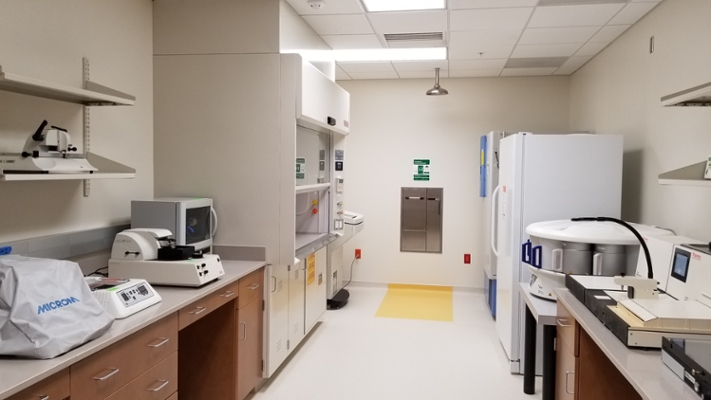
Cell Culture Laboratory
Only current users preparing samples for imaging experiments on IMIL microscopes are allowed to use these facilities
- 2 Biological safety cabinets - NuAire NU-540-400
- 6 Incubators - NuAire CO2 water-jacketed -NU-5800/E-12
- Fridge - ThermoScientific TSXSeries (4C)
- Freezer - ThermoScientific 20LFEETSA (-20C)
- Freezer - ThermoScientific Forma 900 series (-80C)
- Waterbath - Precision, model 51221054
- 2 Inverted Microscopes - Zeiss Invertoskop
- Centrifuge- Eppendorf 5810
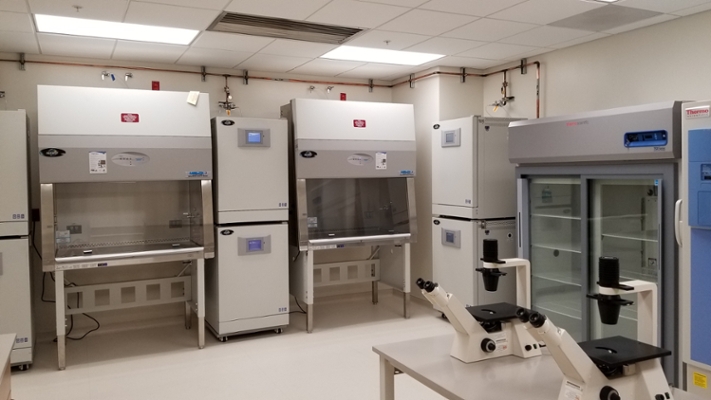
Tissue Prep Laboratory
Only current users preparing samples for imaging experiments on IMIL microscopes are allowed to use these facilities
- Fridge - ThermoScientific 20LFEETSA (4C)
- Freezer - ThermoScientific 20LFEETSA (-20C)
- Dissecting Microscope - Zeiss Stemi 2000-C
- Biological safety cabinet - Forma Scientific CCI 1240-4
